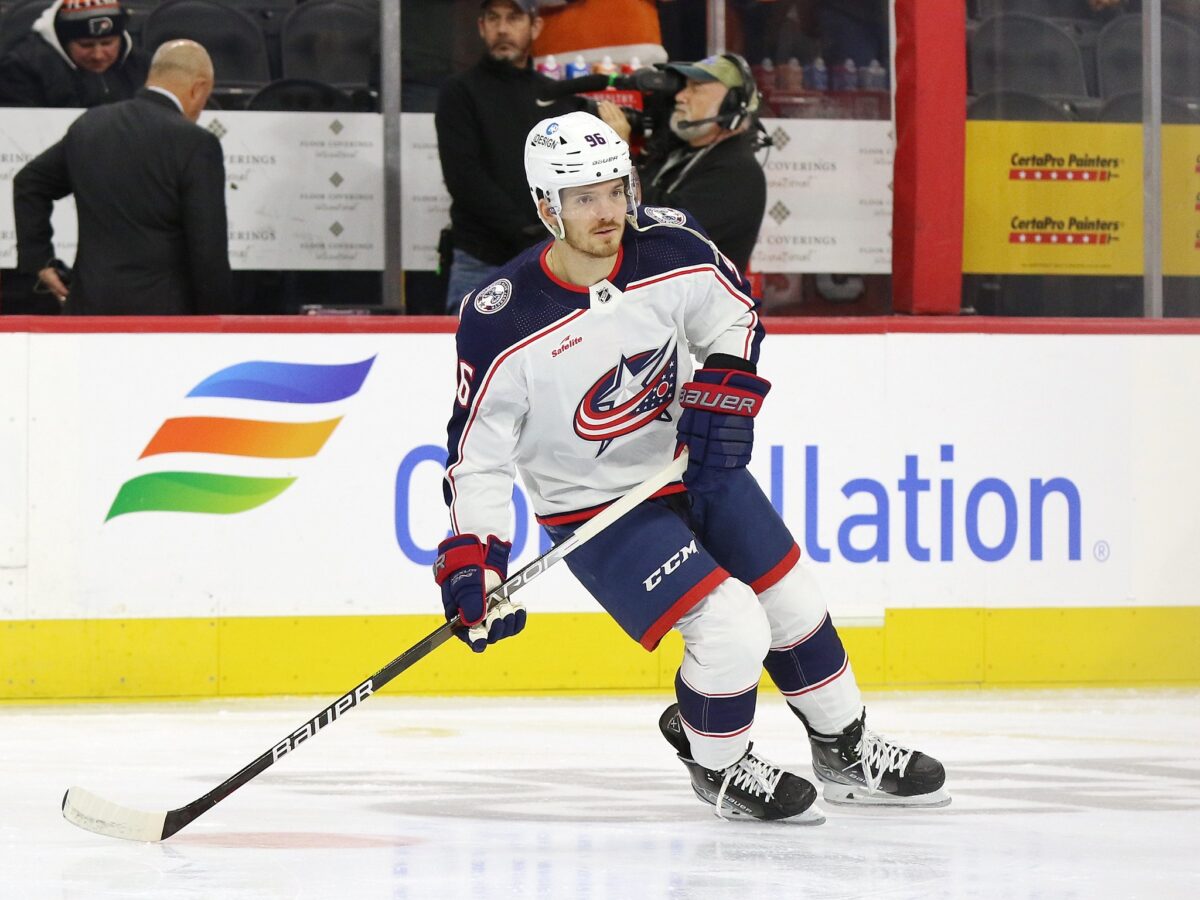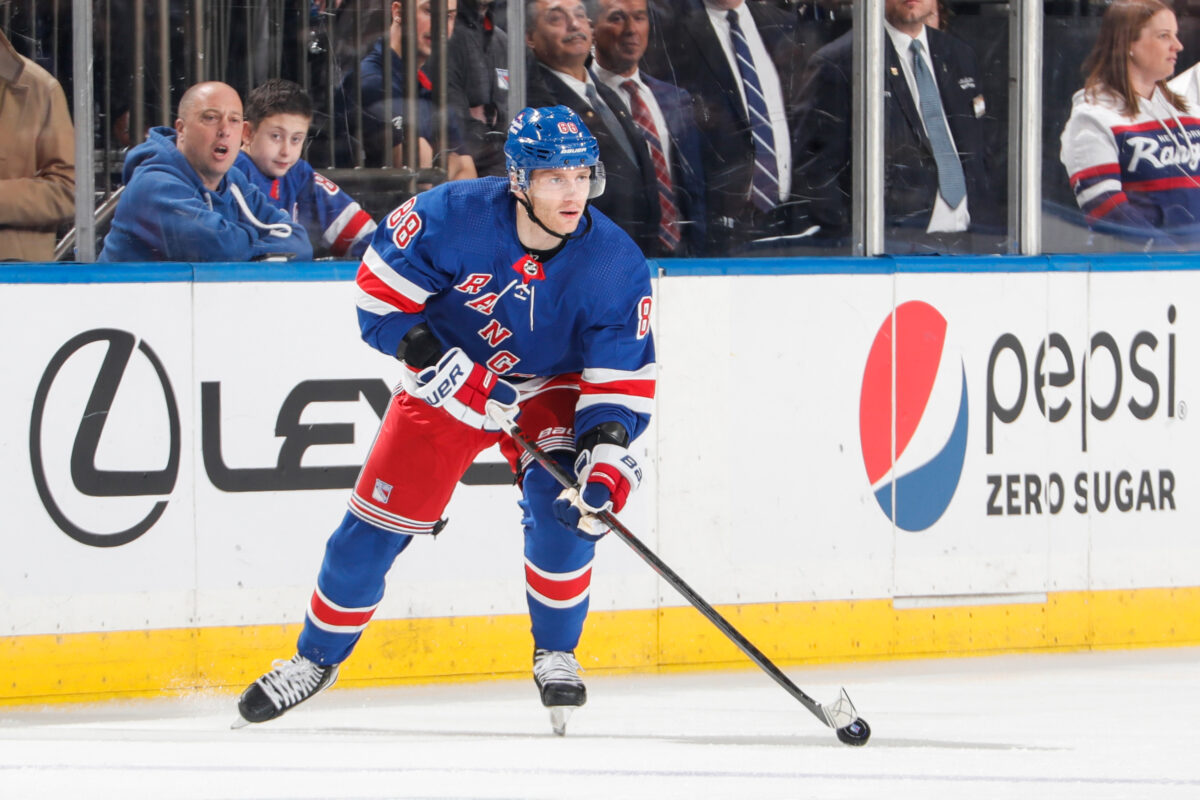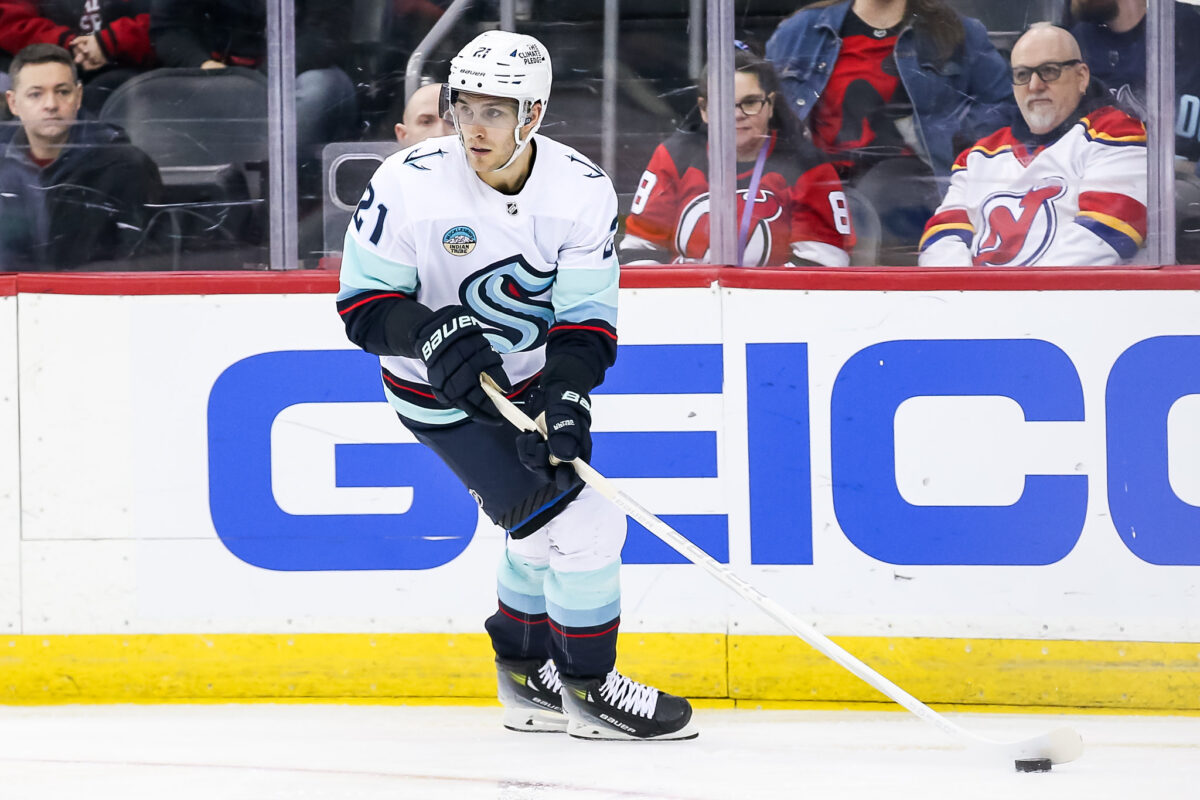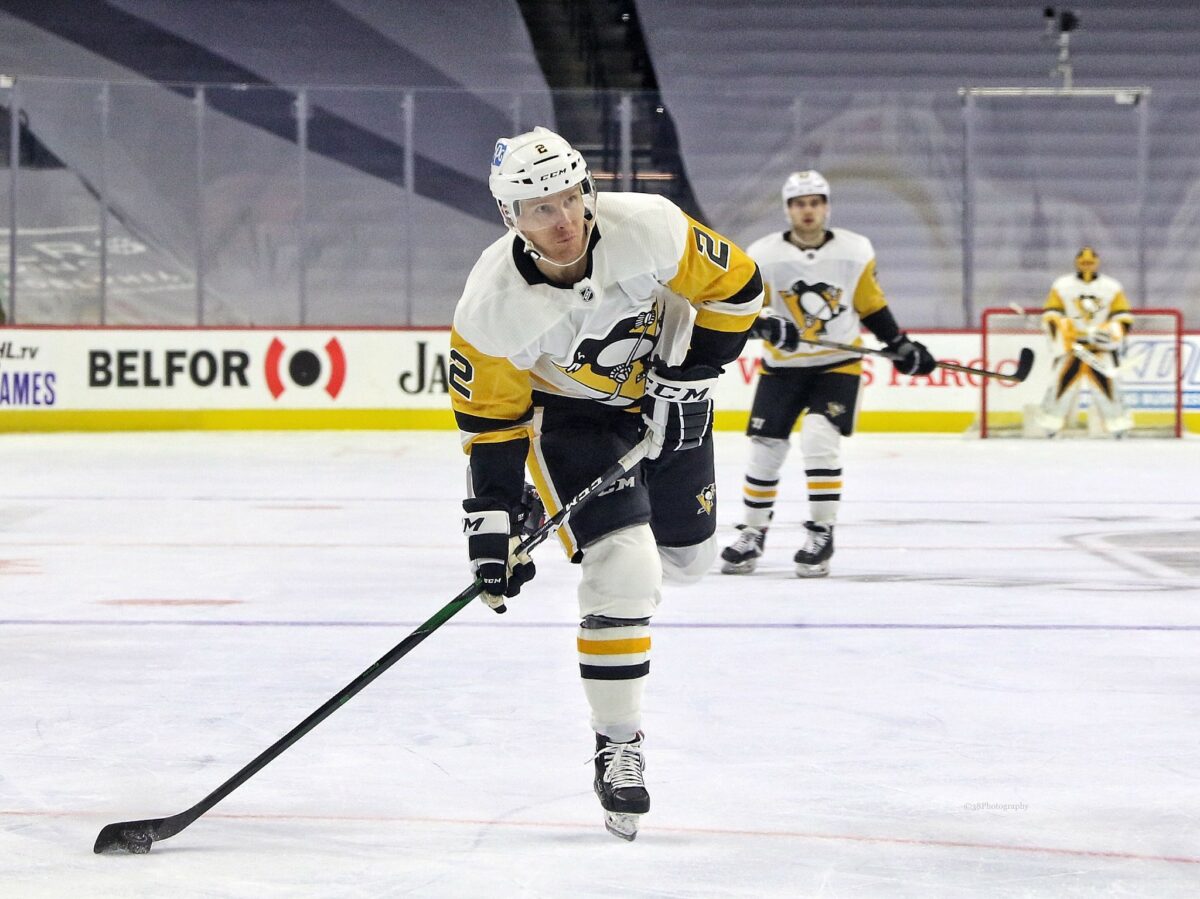As the clock ticked down to 3 p.m. Eastern Time on March 8, it became clear that no big names were going to be walking through the door to the New York Rangers‘ locker room on trade deadline day.
Available wingers, any of which would have filled the Blueshirts’ most glaring roster hole on the right side, kept coming off the board. Jake Guentzel, the best available option, had been dealt the day before. Then, as morning turned into afternoon: Tyler Toffoli. Anthony Duclair. Jason Zucker. Jordan Eberle signed an extension with the Seattle Kraken. Old friend Frank Vatrano, rumored to be among the Blueshirts’ top targets, remained with the Anaheim Ducks.
As players headed elsewhere or stayed put, there was silence from the Rangers front office, save for a trade for Pittsburgh Penguins depth defenseman Chad Ruhwedel earlier in the day. Thirty minutes before the deadline, the Rangers finally made their move, acquiring forward Jack Roslovic from the Columbus Blue Jackets for a conditional fourth-round draft pick in 2026.

The discontent that got steadily louder as the deadline came closer grew into a collective howl when general manager Chris Drury’s big pickup of the day was revealed. Clearly uncomfortable with the asks for the top forwards on the trading block, Drury refused to budge on sending away significant trade capital, instead opting to follow a path that worked for the Rangers two years ago – a decision that began March 6 with his first acquisition of what proved to be an eventful trade season around the league.
Drury’s deal for Kraken center Alex Wennberg, an unspectacular yet sound and versatile addition who should help solidify the thin bottom six, and his ensuing pickup of Roslovic, a former first-round pick with offensive talent who hasn’t been able to put it all together, evokes the GM’s first deadline in charge in 2022, when he went for quality and quantity over the big fish and was rewarded.
Roslovic Evokes Memories of Vatrano, Copp, Motte Deadline Acquisitions
Roslovic, who had been playing right wing on the Blue Jackets’ top line, seems likely to get a shot at riding along with Chris Kreider and Mika Zibanejad, the latter of who hasn’t produced at his usual high standards this season. At first glance, Roslovic’s numbers only add to the howling: He’s recorded six goals and 17 assists in 40 games in 2023-24, having missed more than six weeks with a fractured ankle suffered ironically enough against the Rangers on Nov. 12.
Drury’s pickups at the 2022 deadline, however, hardly dwarfed Roslovic’s current stats at the time: Vatrano, plucked from the Florida Panthers’ bottom six for a fourth-round pick, had totaled 10 goals and nine assists in 49 games before being obtained. Andrew Copp’s numbers were better but hardly spectacular, at 13 goals and 22 assists in 56 games when Drury got him from the Winnipeg Jets for first-, second- and fifth-round picks and forward Morgan Barron, in what turned out to be his one pricey deal that year.

Vatrano and Copp, of course, ended up being instrumental in the Blueshirts’ surprise surge to the Eastern Conference Final. Both players were little known to Rangers fans when they were acquired. The same held true of fiery fourth-line winger Tyler Motte (fourth-round selection), who went on to become a favorite at Madison Square Garden, and veteran defender Justin Braun (third-rounder), who helped settle down rookie Braden Schneider on the third pair.
In Roslovic and Wennberg, Drury is hoping he’s again brought in lower-profile but undervalued players who can bolster a team that’s looking to make a run at the Stanley Cup in what appears to be a wide-open championship race. Unwilling to deal away his limited high picks over the next three years for what was available, it’s possible Drury was also taking into account his deadline moves of last year, when he landed a couple of headliners and didn’t get close to the payoff he or the team was hoping for.
Related: Rangers Had Interest in Predators’ Tommy Novak Before Extension
The GM again appeared to have pulled off a masterful couple of moves in 2023, jumping the market to acquire right wing Vladimir Tarasenko and defenseman Niko Mikkola from the St. Louis Blues three weeks before the deadline, then patiently waiting out the Chicago Blackhawks to acquire right winger Patrick Kane, who essentially chose his destination by refusing to waive his no-move clause for any team but the Rangers. Drury surrendered first- and fourth-round picks, forward Sammy Blais and a minor leaguer to the Blues; he only gave up what turned out to be second- and fourth-rounders for future Hall of Famer Kane.
It didn’t work out, of course. Neither Tarasenko nor Kane, who was a shell of himself due to injury, made enough of an impact in the Blueshirts’ seven-game crash out of the first round of the playoffs against the New Jersey Devils. Both departed as free agents last summer.
Such a result is hardly atypical. It’s been proven time and again that the teams that appear to “win” the deadline often don’t win the Cup. The Vegas Golden Knights and Colorado Avalanche probably hold that distinction this year after loading up this week, but history suggests their high-profile transactions don’t necessarily give them a leg up on other contenders.

Drury saw an opportunity to add stars last season, especially with Kane determined to come to New York, and took a big swing. He didn’t seem to detect that opportunity this year and balked at the significant price tags being attached to the top trade options. That didn’t make the fans happy on deadline day, but that’s not Drury’s job.
Drury Went for Value Pickups, Not Big Names
In the 27-year-old Roslovic, the Rangers get a speedy 6-foot-1, 200-pound player with quick wrists and a powerful shot, who excels at beating defenders one-on-one in open space and attacks the net. The 25th overall pick in the 2015 draft by the Winnipeg Jets has two career hat tricks and has been coming on lately, with four goals and nine assists in his last 12 games.
The pending unrestricted free agent had been rumored for months to be a possible Rangers target to fill their third-line center hole that opened up when Filip Chytil was lost for the season, but Wennberg slid into that vacancy when he was obtained for a second-round pick and a conditional fourth-rounder. Capable of matching up with opponents’ top lines, proficient at moving the puck out of his own zone and a strong distributor, Wennberg has the chance to excel for the Rangers in the 3C role after playing mostly in the top six in Seattle.

Only time will tell if Drury was able to duplicate the value he got at the 2022 deadline, when he obtained effective under-the-radar players without mortgaging the team’s future. The GM still has his first-round selections in each of the next three drafts – significant because the Rangers don’t have a second-round pick until 2027.
Will the trades for Wennberg, Roslovic and Ruhwedel – a right-side defender who may jump right into the lineup with captain Jacob Trouba expected to miss two to three weeks due to injury – be looked back at fondly as shrewd pickups that contributed to a deep playoff run? Or will the 2024 deadline prove to be a punchline, a case of Drury striking out on lesser names while refusing to go all-in for Guentzel, Vatrano or other high-profile forwards?
What is for certain is that the Rangers won’t be planning a championship parade unless their core guys play to their abilities – Roslovic and Wennberg are highly unlikely to lead the way. To win a title for the first time in 30 years, the Blueshirts will need more out of Zibanejad. They’ll need Artemi Panarin, their best player who’s in the midst of a Hart Trophy-caliber season, to put his playoff demons behind him. Igor Shesterkin will have to keep playing at the elite level he’s rediscovered since the All-Star break, and Adam Fox has to be at his creative, play-driving best.
If the incoming trio make contributions on the level of the 2022 deadline group, then Drury’s approach this year will have been successful. If their efforts help the club hoist the Cup, they’ll join the 1994 deadline acquisitions in franchise lore.

It’s worth noting that the pressure on this incoming group is greater than what the 2022 acquisitions faced. Those Rangers were just emerging from a rebuild, having surprisingly fashioned a 110-point season after missing the playoffs in three of the previous four years. Not much was expected, and Drury’s beefing up of the lineup was seen as a pleasant development, a smart way to give an up-and-coming team a chance to make a run without shipping out their young assets.
Two years later, firmly in a window of Stanley Cup contention, fans expect the front office to add obvious difference-makers before the deadline.
If Roslovic, Wennberg and Ruhwedel prove not to be that, Drury can at least argue that he protected and preserved his ability to further enrich the club’s base of young talent by holding on to his first-rounders and prospects Gabe Perreault and Brennan Othmann, along with young NHLers Will Cuylle and Kaapo Kakko.
That rationale almost certainly won’t please the fans who wanted Guentzel – who Drury might not have been seriously bidding on, considering the somewhat underwhelming package the Carolina Hurricanes ultimately gave up for him – or Vatrano or someone else at any cost. It’s up to this latest unheralded Rangers trade deadline class to evoke their counterparts of two years ago and make the faithful forget about who went elsewhere.
